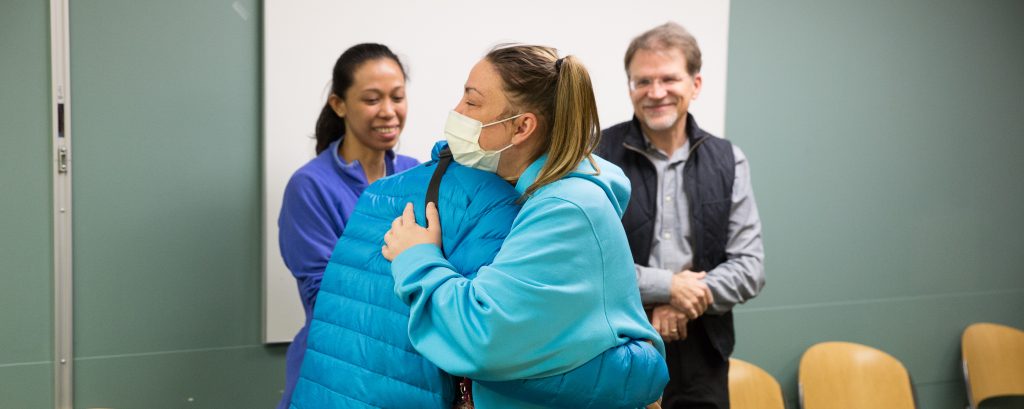Kidney donation can often move forward more quickly than other types of organ donation because you can use a living donor. If your transplant team believes you are a good candidate for a transplant, you will be put on a transplant list. Verify with your transplant team that you are active on the deceased donor waiting list, but know that you have other options, too. You can also help the process along if you can find a living donor.
Living donors are matched based on a number of physical factors. Finding a perfect match with the right blood and tissue types is not always easy. If you are searching for a living donor, consider these ideas to help you find one.
- Talk to Friends and Family
The first place to look for a living donor is often within your own family. Due to genetics, the chances of someone being a match are higher with a blood relative. Find out from your transplant team what you need in a donor, and then reach out to your family. If someone is interested, have them get tested to see if they are a match.
If you do not find someone within your family, move to friends. People who know and care about you are often more willing to be a donor than strangers. See if someone you know is willing to get tested.
- Use Social Media
If your immediate family and close friends aren’t a match, consider starting a social media campaign. You can launch a page to educate people about transplants and living donation and to highlight your need. Be careful with this, because social media can bring out a lot of scammers, but you can reach many more people if you carefully tap into the power of social networks.
- Build Local Support
Reach out to your local television station or radio station to see if they will carry your story. The more local attention you can build about your need for a donor, the more likely it will be that someone will come forward who is a match. You can also create posters or fliers to hand out in public at local events or to hang in your local library. Sell t-shirts or bracelets with your information that people can wear in public, and use the money towards your medical expenses.
- Share Your Story Wherever You Can
The more times you share your story, the more likely it will be that you will find a donor. Prepare an “elevator speech” you can use to open the door and be willing to answer questions as they come up. You ever know who you will bump into that might be a willing donor, so the more people you talk to, the better your odds.
- Stay Current with Your Medical Team
Your medical team can’t necessarily find a donor for you, but they will be current on the techniques other recipients use to find one. Keep the lines of communication open with your transplant team as you look for a donor.
- Consider Paired Kidney Donation
You may end up in a situation where you have a large number of interested people who want to help, but none of them is a match. In this case, consider paired kidney exchange. Paired kidney exchange allows two patients who have interested but incompatible living kidney donors to swap donors.
Of course, finding this type of paired match is not always easy. The Alliance for Paired Kidney Donation improves this process by allowing two-, three- and four-way exchanges. A medical team can enter the information of a patient and their willing donor into the APKD software, and the software will search for a match in a huge database of other interested donors. This results in faster matches for most recipients while also allowing the interested donor to do their part to help, even if they are not a match for you.
Finding a living donor takes time and tenacity, but it is often much faster than waiting for a deceased donor. By doing the legwork to search for a living donor and staying active on the deceased donor list, you increase the chances of a successful transplant in a timely manner. Using a tool like the Alliance for Paired Kidney Donation also increases the chances of finding the right match.

